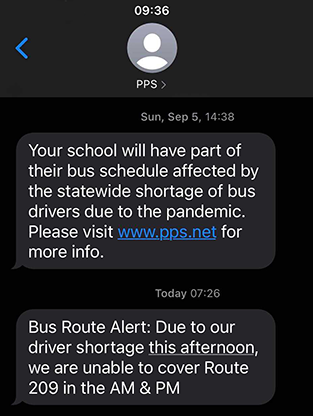4 Ways to Run Successful Meetings People Won’t Hate
We just launched an ebook to help you figure out how much meetings cost your company, how they affect your company’s culture, and how to make them better.
Over the coming weeks, we’ll post excerpts to give you a taste. First up, here are four ways to run successful meetings that people won’t hate.
The list below is from a section of the book about a meeting-related research study. The study was all about having better meetings, and specifically what it was about a “good meeting” that made it good.
(If you’d like to read the original study, a PDF is here: Meeting Design Characteristics and Attendee Perceptions of Staff/Team Meeting Quality, by Cohen, et al. It’s 15 pages long, so we figured some shorter take-aways would help.)
1. Start and End on Time
Regardless of whether all attendees are present, people rate meetings substantially higher if they start and end on schedule. Bonus: This also saves on the operational costs of meetings, since you’re not paying people to sit there waiting around. If you’re going to try only one recommendation we have, make it this one—no other single, simple change will have as big an impact.
Tip: If you have trouble getting people to show up at your meetings on-time, consider implementing a “one minute rule.” This means your meeting starts one minute after the scheduled time, no exceptions—this trains attendees to show up on time for future meetings.
If you allow for the typical 5-10 minute grace period, you’re wasting the time of the people who showed up on time and punishing them for doing the right thing. Cut it out!
2. Create an Agenda and Distribute It Beforehand
If a meeting has an agenda, but that agenda is not shared before the meeting, the agenda is effectively worthless (such a meeting ranks the same as those with no agenda at all).
This speaks to the importance of setting expectations in advance and following through with them. An agenda isn’t simply a schedule—it’s a roadmap. Show it to participants in advance so they can prepare for the journey.
3. Invite Fewer People
In general, the more people present in a meeting, the less each person participates (or at least, the less each person feels he or she participates), and the harder it is to keep everyone coordinated. It’s easy for a person to feel that he or she is not needed (or, worse, is wasting time) when the number of attendees is very large.
Our book provides tools for measuring what each attendee got out of the meeting, tracking that over time, and improving. If you find folks who consistently aren’t getting value from their meeting time, and you can’t make it worth their time, stop inviting them. This will save you time, money, and frustration.
4. Choose the right meeting place.
The meeting study (by Cohen, et. al., 2011) shows that meetings held in person have very specific requirements in order to deliver good quality—the room must be sized properly for the number of people, requires appropriate tools (projectors, whiteboards, and so on), has to be a pleasant temperature, and even has precise requirements about the nature of refreshments (!).
In other words, you need a space to meet where people can be comfortable and focus on the topic at hand. (Especially for online meetings, this means preparing in advance to avoid any technical hassles. Do a test-run with your meeting software, your telephone system, and other people joining the meeting!)
5. SURPRISE BONUS ITEM: People Don’t Care about Meeting Minutes, but They’re Useful Anyway
One interesting finding of the study was that participants who received a meeting record (a.k.a. meeting minutes) afterwards didn’t seem to care. Specifically, if they had two similar meetings and one had a followup meeting record sent out while the other did not, participants ranked them the same. So why have a meeting record?
Two key reasons:
-
This will go down on your permanent record. It’s hard to remember all the key decisions, action items, and other outcomes of any given meeting. By the time months have elapsed, it’s virtually impossible to pinpoint when a given item was discussed or a decision made. So even if the written record does not matter to your meeting participants in the short term, it matters to you and your company over the long term.
Our book explains how you can use your meeting records to examine how your company’s meetings work (and improve) over months and years. You can’t expect to notice trends over time if you never bother to write it down in the first place!
- If you dis-invite people, you may need to keep them in the loop. Item #3 above is all about cutting out people who don’t need to be in a given meeting. But sometimes a person who doesn’t need to be there still needs to know what happened! Having a simple record (and we do mean that—think half a page of major items, ideally in bullet form) is crucial for informing anybody who wasn’t there, who missed the meeting due to illness, or who is your boss.
Get the Book
The sample above is just one page out of our book. You can get the whole thing for free, right now. Go for it: Download the e-book!



